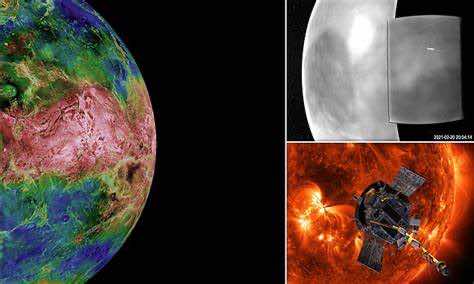NASA’s Parker Solar Probe had contributed to the finding that could help astronomers and scientists better understand the minerals that make up this rocky and mysterious planet. Actually, it had captured some images that revealed the red hot glow of Venus’s surface radiating through its shroud of toxic clouds. Scientists were able to look through the inner atmosphere under the planet’s thick atmosphere via data from the Wide-field Imager for Parker Solar Probe (WISPR).
“Venus is the third brightest thing in the sky, but until recently we have not had much information on what the surface looked like because our view of it is blocked by a thick atmosphere,” says astrophysicist and WISPR team member Brian Wood of the US Naval Research Laboratory.

Venus has proven difficult to study. It is known as Earth’s “evil twin” because while similar to Earth in size, mass, structure, and even composition, it is deeply hostile to life. Venus is dry and possibly volcanic whereas Earth is temperate and wet. The sky of Venus is filled with thick, toxic clouds that rain sulfuric acid. These factors make it difficult to investigate the planet.
Last year, WISPR took some images of Venus‘s night side that seemed to show surface features through the layers of cloud. Wood says, “The images and video just blew me away.”
WISPR takes images in wavelengths that the human eye can see. But it turned out that the instrument can also see a little bit further into the near-infrared part of the spectrum invisible to human eyes. Infrared and near-infrared are the wavelengths of thermal energy – heat. The side of Venus, warmed by the Sun has infrared emissions on the surface that would be lost. But on the night side, it seems temperature variations on the planet’s surface are unexpectedly detectable by the instrument.
“It’s so hot that the rocky surface of Venus is visibly glowing, like a piece of iron pulled from a forge,” Wood explains. Moreover, physicist “Nicola Fox of NASA’s Heliophysics Division mentions Parker in these words, “We’re thrilled with the science insights Parker Solar Probe has provided thus far.”
The research has been published here.


